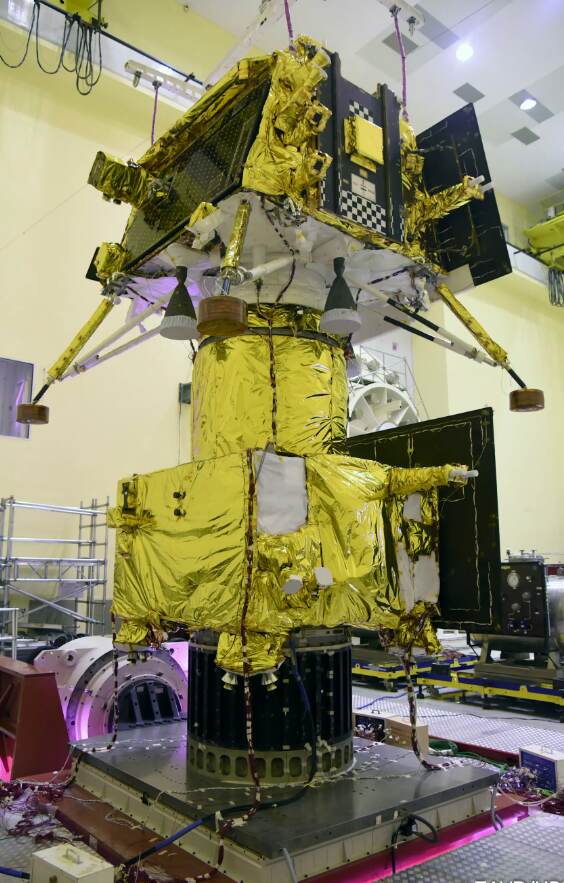India Set to Launch Third Lunar Mission
India is set to launch its third lunar mission, Chandrayaan-3, from the only spaceport in the country, Sriharikota, on July 13th at 2.30 pm. The spacecraft is expected to reach the moon's surface near its south pole on August 23rd, making India the fourth country in the world to achieve a soft landing on the moon. The integrated Vikram lander and Pragyan rover will be targeting a landing site near the moon's south pole at 70 degrees latitude. The mission will be a major milestone for India’s space agency, ISRO, as the country hopes to become a major player in the international space race.
India is set to launch its third lunar mission, Chandrayaan-3, from the only spaceport in the country, Sriharikota, on July 13th at 2.30 pm. The spacecraft is expected to reach the moon's surface near its south pole on August 23rd, making India the fourth country in the world to achieve a soft landing on the moon. The integrated Vikram lander and Pragyan rover will be targeting a landing site near the moon's south pole at 70 degrees latitude. The mission will be a major milestone for India’s space agency, ISRO, as the country hopes to become a major player in the international space race.
This site was selected as it has several craters that remain in permanent shadow, increasing the chances of locating water ice. Chandrayaan 1, which also had NASA payloads, confirmed the presence of water and hydroxyl molecules on the moon. The orbiter from the previous mission is already in place around the moon, so the spacecraft will only fly the lander-rover configuration, which has remained mostly the same except for additional sensors to ensure the mission goes as planned. Several tests have been conducted to guarantee its success. Chandrayaan 2 attempted to demonstrate a soft landing and roving, but unfortunately it crashed 2.1 km away from the moon's surface. This upcoming mission is a major milestone for the Indian Space Research Organisation (ISRO) as it hopes to become a major player in the international space race.
The descent phase of the vehicle has been described as “15 minutes of terror” by the previous ISRO chairperson K Sivan, so it will be an exciting moment for everyone involved as the spacecraft reaches the moon and is captured in its gravity. Once it is in the 100x100 km circular orbit, the lander-rover configuration will make the descent to the moon's surface. The success of this mission will be a remarkable achievement and a major milestone for India's space exploration. It will make India the fourth country in the world to achieve a soft landing on the moon, and will provide invaluable data on the presence of water ice. It is also a confirmation of India's growing presence in the international space race. This mission will be a collective effort and a source of pride for all Indians.




